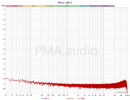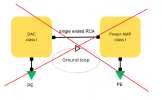Following the thread

 www.audiosciencereview.com
www.audiosciencereview.com
I have prepared a listening test with 2 different audio cables. The cables are as dissimilar as they can be. The test files can be downloaded from
If you are interested in the test, please download and unzip the files and in case you think you can hear a difference, it would be nice to post an ABX report, like from foobar2000. The files are in 96/24 wav format.

Stereophile and Audio Cables
I found it interesting that Stereophile recently published a short review of some audio cables - written by Herb Reichert. https://www.stereophile.com/content/gramophone-dreams-82-ikigai-kangai-level-cables-dcs-lina-headphone-amplifier Cable reviews at one point became very rare at Stereophile...
 www.audiosciencereview.com
www.audiosciencereview.com
I have prepared a listening test with 2 different audio cables. The cables are as dissimilar as they can be. The test files can be downloaded from
If you are interested in the test, please download and unzip the files and in case you think you can hear a difference, it would be nice to post an ABX report, like from foobar2000. The files are in 96/24 wav format.







